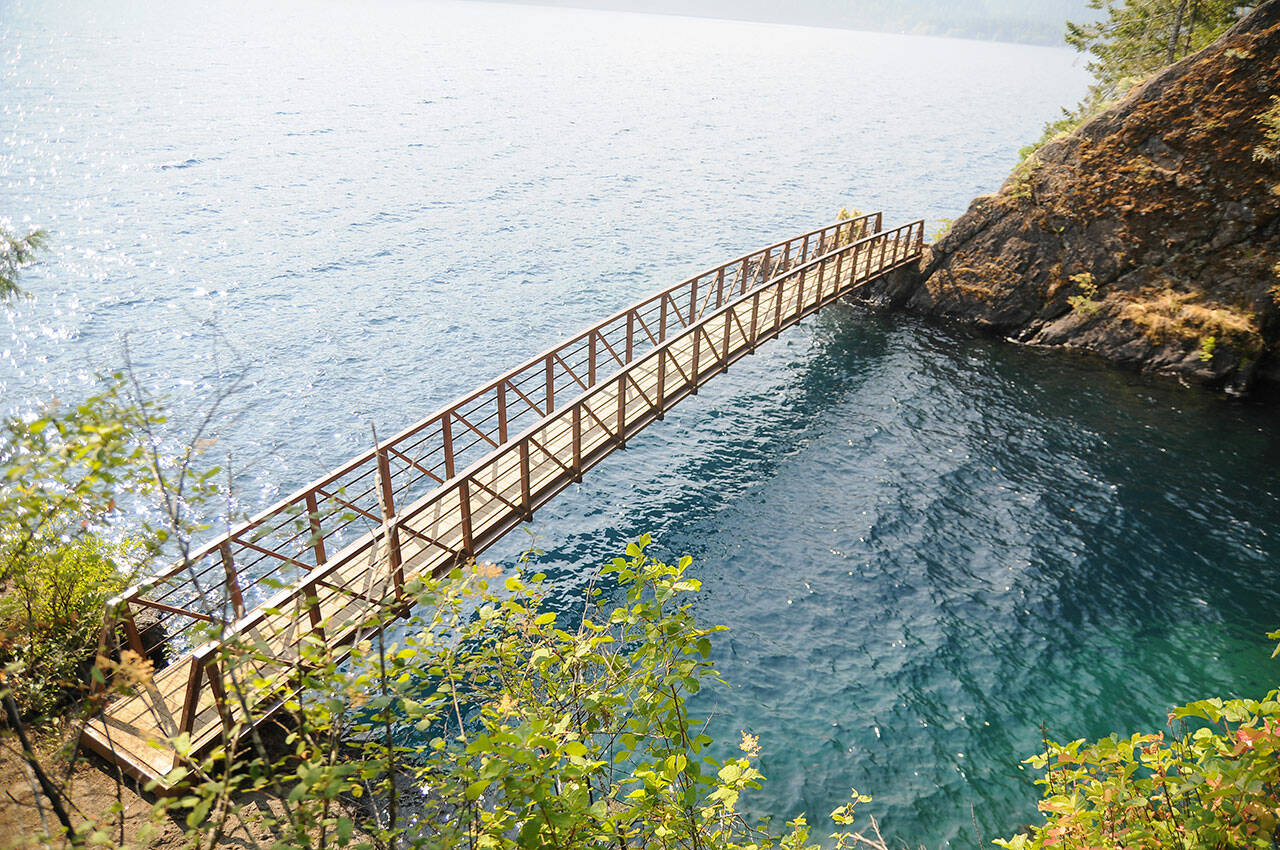A 43-year-old park visitor died Tuesday, Aug. 23, after diving into the popular swimming area at Lake Crescent, Olympic National Park officials reported.
Tou Yang, visiting from Robbinsdale, Minn., jumped from a 40-foot cliff at the Devil’s Punchbowl on the north side of the lake on Aug. 23, park officials said.
Young resurfaced but then was unable to climb out on the rocky shoreline.
“He went under the water and never resurfaced,” park officials said.
Jake Patterson, Clallam County Fire District 2 Fire Chief, said witnesses said they saw a man jump into lake, disappear, emerge, disappear and resurface again, then disappear again without emerging.
When the call came into county 9-1-1 dispatchers, Olympic National Park had a ranger in the area but no boats on the lake. Fire District 2 was called about 11:40 a.m.
Law enforcement responded with two patrol boats and began searching the area. The Jamestown S’Klallam Tribe Public Safety and Natural Resource dive team joined the search and were able to locate and recover Yang’s body four hours later.
Olympic National Park no longer has a dive team, park spokeswoman Lee Snook said.
Rory Kallappa, with Jamestown S’Klallam Chief of Public Safety and Natural Resources, wrote in an email that a three-person dive team boarded the park’s patrol boat and entered the water at the victim’s last known location at about 3:45 p.m.
They were able to locate the body shortly thereafter in about 70 feet of water.
In July 2006, the body of 20-year-old Jesse Sayre Thanem of Port Angeles was located by National Park Service scuba divers in about 55 feet of water at the Devil’s Punchbowl.
The Devil’s Punchbowl is a narrow, rocky cove on Lake Crescent along the Spruce Railroad Trail. Its depth, which can reach up to 200 feet, makes it a popular swimming and diving area.
The water at Devil’s Punchbowl is deep and the entire lake can be very cold with temperatures, averaging around 66 degrees, park officials noted in their press release about Young’s death.
“Sudden immersion into cold water can impact a person’s breathing and ability to move extremities,” they said. “Swimmers are encouraged to use a buddy system while on the water, use a life jacket, and understand the risks of hidden hazards of natural waters – rocks, vegetation, currents and waves.”



